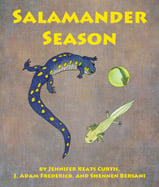Alignment to Standards for UT

| Grade | Number | Standard |
|---|---|---|
| 2 | CC-2.III.1 | Investigate relationships between plants and animals and how living things change during their lives. |
| 2 | CC-2.III.1a. | Observe and describe relationships between plants and animals. |
| 3 | SC-3.II | organisms depend on living and nonliving things within their environment. |
| 3 | SS-3.I.2a. | the major world ecosystems: desert, plain, tropic, tundra, grassland, mountain, forest, wetland |
| 4 | SC-4.V.2b. | Cite examples of physical features that allow particular plants and animals to live in specific environments (e.g., duck has webbed feet, cactus has waxy coating). |
| 4 | SC-4.V.2c. | Describe some of the interactions between animals and plants of a given environment (e.g., woodpecker eats insects that live on trees of a forest, brine shrimp of the Great Salt Lake eat algae and birds feed on brine shrimp). |
| 5 | SC-5.V.1c. | Compare various examples of offspring that do not initially resemble the parent organism but mature to become similar to the parent organism (e.g., mealworms and darkling beetles, tadpoles and frogs, seedlings and vegetables, caterpillars and butterflies) |
| 5 | SC-5.V.2b. | some environments give one species a survival advantage over another (e.g., warm water favors fish such as carp, cold water favors fish such as trout, environments that burn regularly favor grasses, environments that do not often burn favor |
| K | CC-K.III.2c. | Describe how animals care for their young. |